Concept art is a stage of content creation that many companies forget about. This is a shame, because it is just as important as designing an architecture plan before starting the construction of a building.
This is hardly a process that should be improvised, and we are here to tell you all about character concept art and its difference from concept design. In fact, you can consider it an ultimate guide on making game character concept art, its types, and getting high-quality character concept art services.
What is the difference between concept art and character design?
Concept art and character design are different processes and stages of visual content production. Many people confuse them, considering them synonyms. Let’s finally clear things up.
What is character concept art?
Concept art is the visualization of an idea, the concept of a future project. It is a must-have step before developing any art project: comics, games, cartoons, promotions, etc. Thus, concept artists create a model sheet document in order to test and establish the appearance, gestures, and facial expressions of a character, object, setting, and other elements.
For example, video game character concept art requires visualizing main and minor game characters. Often, the artist will sketch game characters in different poses and depicts a range of emotions. It’s done in order to transfer an idea to a digital form following the example of a developed concept.
Fun fact: The very first use of the term “concept art” was by Walt Disney Animation Studiosin the 1930s.
What is character design?
Character design is the process of creating the final version of a character that can be used in a project. While concept art is a sketch that represents an idea, character design is a detailed and polished image ready for introduction in a media file. Usually, character designers use professional software for drawing 2D characters like Adobe Illustrator and 3D character modeling like ZBrush and 3Ds Max.
The process of designing 2D characters requires using a digital pen and other related tools for drawing, ending with coloring and 2D rendering. In the case of 3D character modeling, the process takes specific skills, methods, and tools. You can also learn more tips for organic modeling.
For example, many game character designers use polygonal modeling methods — the use of polys (polygonal shapes) to create a polygonal mesh in the shape of a future character. Further, design artists use texturing, 3D rendering, and animation to finish a character design.
How to make character concept art
The process of making character concept art consists of five main stages, from gathering references to rendering. Usually, the preferred approach is to create a character with a catchy and attractive appearance to draw more attention. So let’s have a closer look at this process with the step-by-step list below.
Research and References. The first step of concept art creation is gathering information and finding inspiration. Artists have to interview an art director of a project and learn more about a future product, its theme, and its style. Then, specialists search for references to get an image of a future character that will impress the target audience.
P.S. References can be direct or indirect. Direct references borrow elements of existing characters and apply them to the new design with minimal changes. At the same time, indirect references are a general impressions and knowledge of particular features based on thorough research of existing materials.
Draw a character outline. When an artist forms an idea of a future character, it’s time to bring it to life. It’s better to start with creating a simple silhouette and follow with drawing contours of anatomy and topology features. In addition, specialists draw several copies of a character in different poses, facial expressions, and gestures.
Add the core details. Concept artists define the unique features of a character’s appearance at this stage. For example, scars, hairstyle, accessories, and clothing (in case the character is a human being), along with skin ornaments, costumes, magical abilities, etc.
Do the coloring. Based on the subject matter, specialists choose a color scheme for a character — the primary colors of skin, clothes, eyes, and hair. Using classic or digital pens and brushes, artists paint characters to make them look more attractive and natural.
Shading and rendering. At the final stage of developing a concept, artists use shading — creating the range of darkness that makes a character look more natural and volumetric. In the end, an artist draws the final versions of a character and its different expressions in one document and renders its background to create a harmonious composition.
Need stunning character concept art?
We’re ready to bring your idea to life!
Character concept art examples
Depending on the purpose, style, and genre of the future project, you can choose different approaches and styles. Here, we decided to share some examples of the most popular character concept art types.
Fantasy character concept art
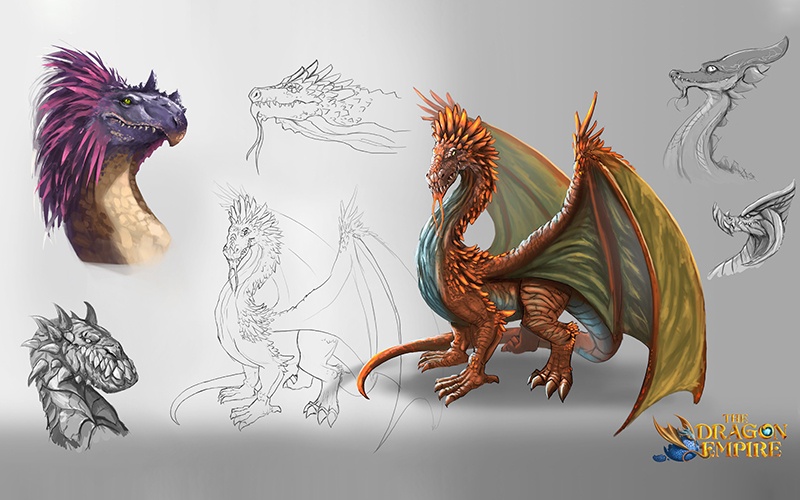
Dragons from the Dragon Empire
Avatar, the Witcher, dragons, and werewolves are some of the most famous fantasy characters/creatures in the world. The audience loves them because they are atypical, original, and engaging. Thus, fantasy character concept art often involves the creation of a colorful skin of a character with ornaments, elements of animals in appearance, and the magical effects/tools they have.
Human concept art
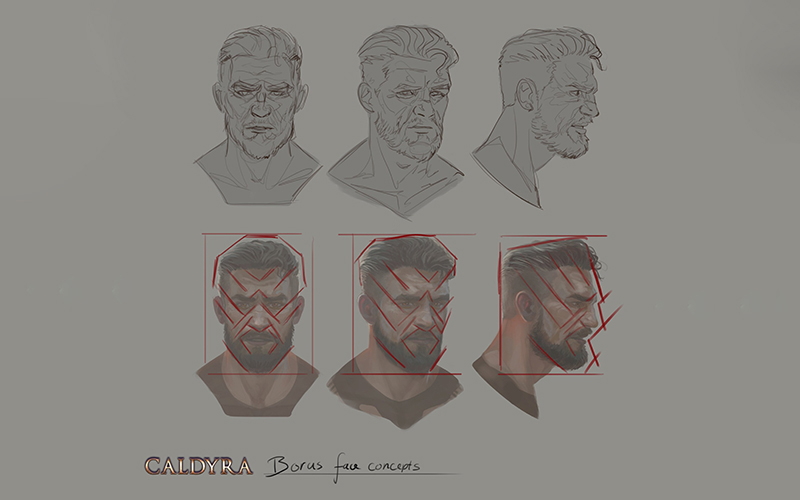
People like watching humans and playing them as the main characters in games because we easily relate to them. At the same time, we can make them exciting and different from our experience through styles and attributes.Just think of the variety of male character concept art we can achieve with a few changes.
Artists can create a sweet little boy, a strong warrior, a criminal, or a wise old man. On the other hand, female character concept art can also easily point to different roles: a rebel girl, a caring mother, a horsewoman, an old lady.
Cartoon character concept art
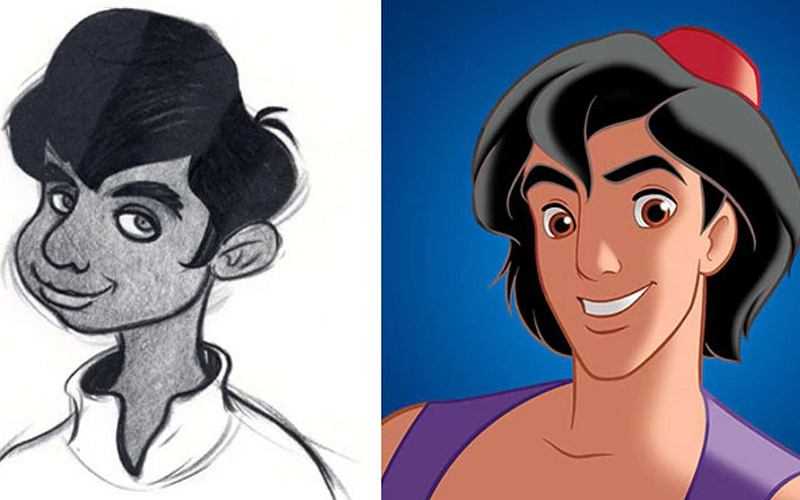
Creating cartoon character concept art is usually fun and inspiring. People know and love many famous cartoon characters that touch the hearts of children and adults. For example, Mickey Mouse, SpongeBob, and Minions.
Whether you create 3D or 2D character concept art, most of the designs for children are vivid, cute, and focused on promoting a positive mood. At the same time, cartoonish characters for an adult audience can be colored in softer colors and a more realistic way.
Animal character concept art
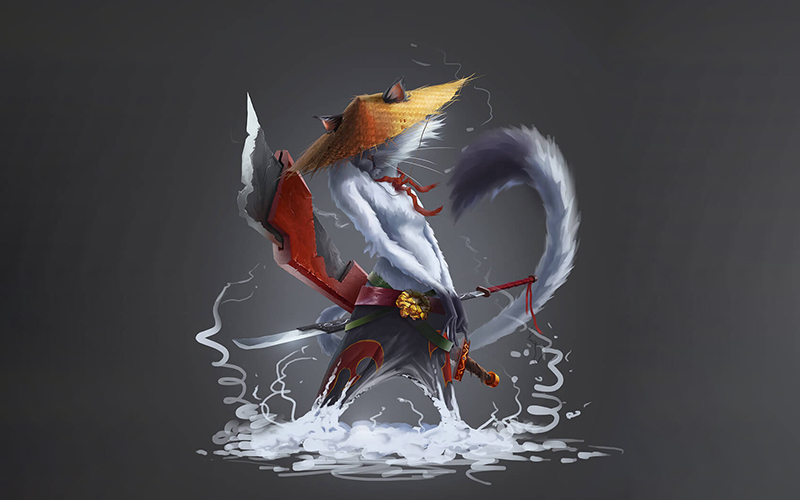
Creating an animal-based character, it’s necessary to define if it will be a regular animal like Simba in The Lion King or an animal-like character with human-like characteristics like BoJack Horseman.
But no matter what type you choose, the most important thing is to portray the character’s personality. Create a variety of facial expressions for different emotions – anger, joy, surprise, and fear. Think about the unique features that set your animal-based character apart from regular animals.
Comic book character concept art
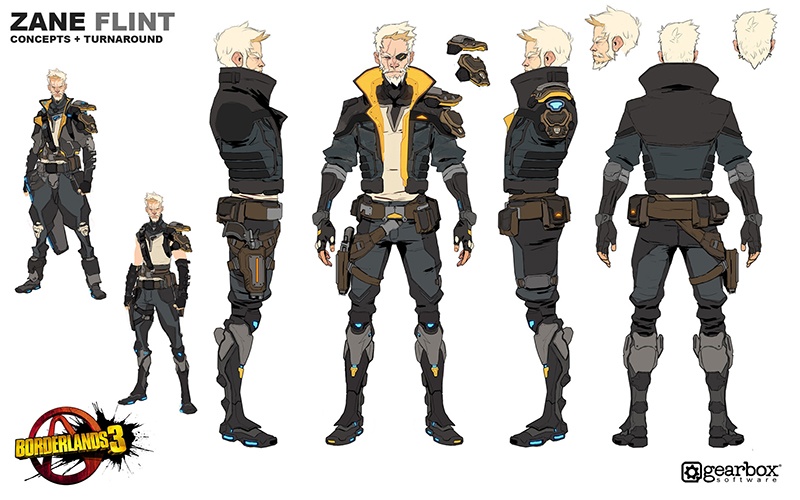
Comic book character types are not only about superheroes like Spider-Man, Batman, and Aquaman. Concept art created in comic book style is about a particular way of drawing and creating characters driven by the main archetypes: the outlaw, the hero, the magician, the explorer, or the sage.
How to Outsource a Character Concept Art Development
Designing professional concept art is a crucial task for drawing in your target audience. However, it takes high-level drawing skills, creativity, mastering professional software/tools, and broad experience to create concept art that does all this. Thus, choosing a top-notch character concept artist or a partner company guarantees that you’ll get a quality product.
3D-Ace is a 2D/3D content production company with over 10 years of experience. Having successfully delivered more than 150 projects to our clients, we provide a wide range of services — 2D art, 3D modeling, rendering, animation, and various types of concept art design:
- Character concept art for most vivid and captivating characters;
- Environment concept art for harmonious landscapes for any plot and genre;
- Design of vehicles, weapons, and assets that add depth to your digital world;
- Game level design that delivers a truly enthralling gaming experience.
If you need a reliable technical partner, contact us at an appropriate time, and we’ll be happy to consult you about the details of your project.




